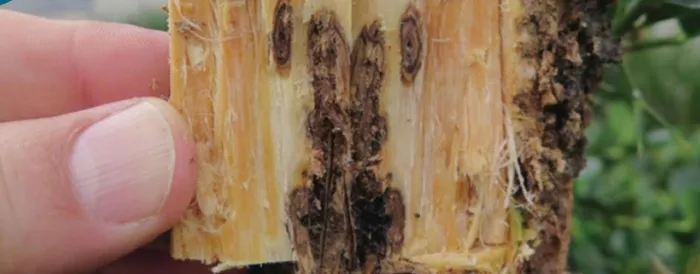Invasive, tree-killing beetle is spreading

The beetles make tunnels in trees to lay their eggs inside.
Gardening and landscaping businesses and others that handle trees and plant material will be getting free training on how to prevent the spread of an invasive tree-killing beetle, says the City.
Last week, the City confirmed new infestations of the polyphagous shot hole borer beetle in Observatory and Kenilworth.
By Friday February 24 , there were 168 reported sightings of the pest in Newlands, Rondebosch, Mowbray, Claremont, Kenilworth, and in Observatory along the Liesbeek River, according to a City statement. In the Helderberg area, 3 900 infested trees have been sighted since 2019 to date.
The beetle first appeared in Cape Town in March 2019, when it was found in an ailing London plane tree in Somerset West. It was confined to trees in the Somerset West area until Tuesday January 24 when its sighting in a Newlands boxelder heralded its arrival in the city’s leafy southern suburbs (“Invasive, tree-killing beetle hits southern suburbs” Thursday February 2).
The beetle poses a serious threat to Cape Town’s urban forest, and infested trees must be chipped, according to mayoral committee member for spatial planning and environment Eddie Andrews.
“All trees are under threat, from those on private properties to those along our roads, on verges, in parks and at wine farms. I want to urge private property owners, and wine farm owners in particular, to be on high alert as infestations of oak trees have been confirmed at wine farms outside of the city’s boundaries.
“This is a very small beetle, but the potential damage is at scale. I am urging residents to be on the lookout for symptoms and owners of nurseries and landscapers should do the same. We cannot afford to be complacent.”
What to look out for and symptoms of infested trees:
• Branch die-back – cracks on the branch; discoloured leaves; dry and leafless branches; branch break-off revealing webs of galleries filled with black fungus.
• Gumming – blobs of goo coming out of the bark; oozing of liquid and gum from the beetle holes.
• Entry and exit holes – very small holes on the bark of the tree, the size of a sesame seed (2mm); shotgun-like scars developing around the holes.
• Staining – brown or dark stains on the bark of the tree.
Infested trees may not be removed from the property as the removal of the chipped wood will spread the pest to other areas. Do not buy and move fire wood from areas where trees are infested.
What to do:
• Chip the tree, place the infested material in refuse bags, seal it and put these in direct sunlight for at least six weeks.
• Dump the chips in your compost heap as the heat build-up will kill the beetle.
• Burn infected wood at appropriate incineration facilities.
• Seek assistance from trained and equipped service providers with sound knowledge of the beetle.
• Do not move plant or tree material, including firewood, outside of beetle-infested areas.
• Do not transport any form of green waste in open vehicles.
• Clean tools and equipment used to prune plants.
The beetle can spread easily across suburbs if extra precaution is not taken. Apart from infested wood, the beetle can also spread through clothing, vehicle crevices, or unclean horticultural equipment. Pesticides and fungicides have not proven effective at eradicating the beetle from infested trees.
Officials from the City’s Invasive Species Unit will run the training sessions with gardening and landscaping businesses on how to identify infested trees and manage and transport beetle-infested biomass.
The details of the sessions are as follows:
• Thursday March 9 from 9am to 1pm at the Zandvlei Lookout along Promenade Road, Muizenberg.
• Wednesday March 15, from 9am to 1pm, at the Helderberg Nature Reserve along Verster Avenue, Somerset West.
RSVP by emailing admin.invasive@capetown.gov.za - indicating how many people will be attending and which venue.
Report beetle sightings online at www.capetown.gov.za/ invasivespecies, by calling 021 4444 2357 or sending an email to invasive.species@captown.gov.za